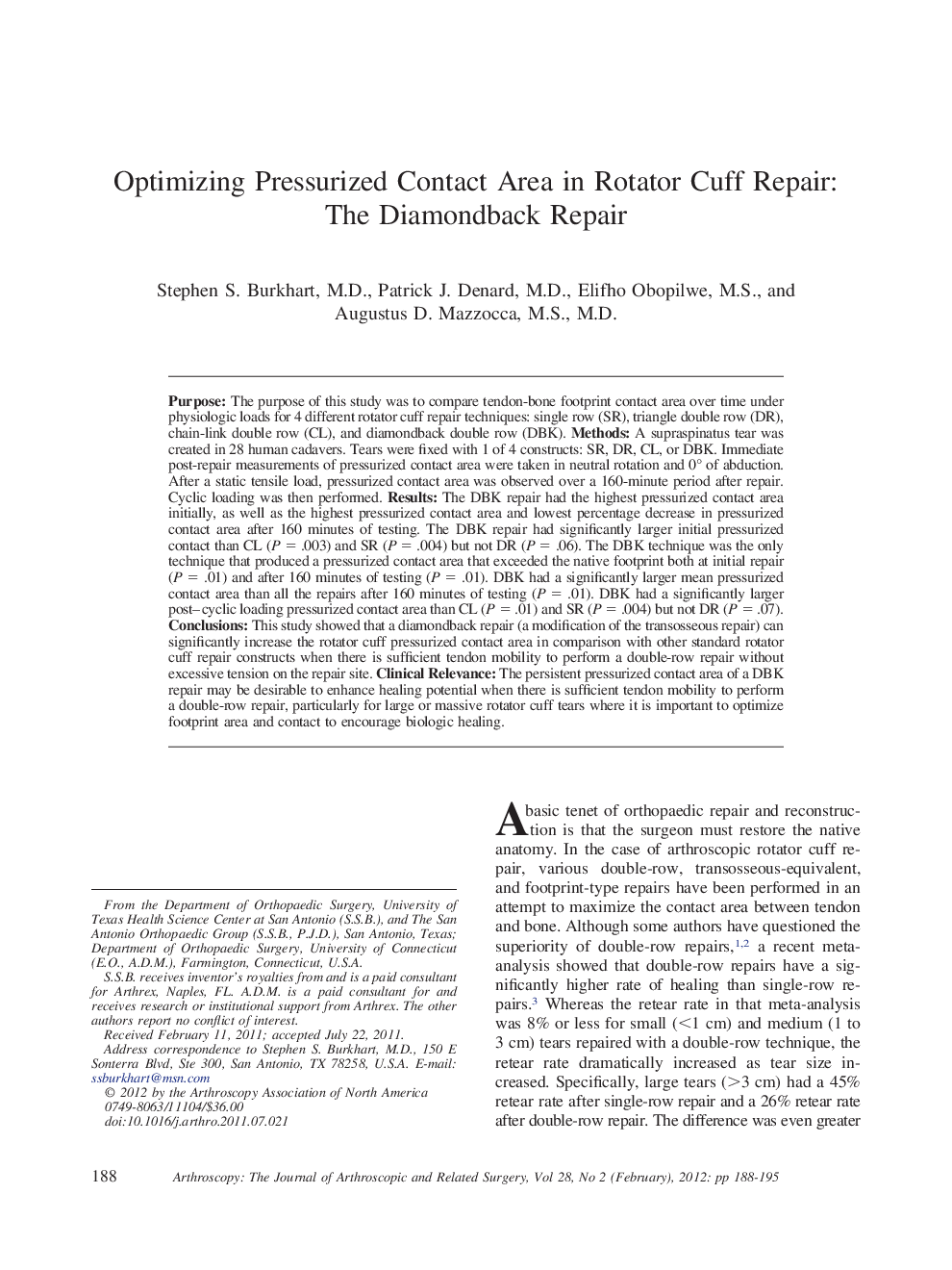| کد مقاله | کد نشریه | سال انتشار | مقاله انگلیسی | نسخه تمام متن |
|---|---|---|---|---|
| 4044987 | 1603532 | 2012 | 8 صفحه PDF | دانلود رایگان |

PurposeThe purpose of this study was to compare tendon-bone footprint contact area over time under physiologic loads for 4 different rotator cuff repair techniques: single row (SR), triangle double row (DR), chain-link double row (CL), and diamondback double row (DBK).MethodsA supraspinatus tear was created in 28 human cadavers. Tears were fixed with 1 of 4 constructs: SR, DR, CL, or DBK. Immediate post-repair measurements of pressurized contact area were taken in neutral rotation and 0° of abduction. After a static tensile load, pressurized contact area was observed over a 160-minute period after repair. Cyclic loading was then performed.ResultsThe DBK repair had the highest pressurized contact area initially, as well as the highest pressurized contact area and lowest percentage decrease in pressurized contact area after 160 minutes of testing. The DBK repair had significantly larger initial pressurized contact than CL (P = .003) and SR (P = .004) but not DR (P = .06). The DBK technique was the only technique that produced a pressurized contact area that exceeded the native footprint both at initial repair (P = .01) and after 160 minutes of testing (P = .01). DBK had a significantly larger mean pressurized contact area than all the repairs after 160 minutes of testing (P = .01). DBK had a significantly larger post–cyclic loading pressurized contact area than CL (P = .01) and SR (P = .004) but not DR (P = .07).ConclusionsThis study showed that a diamondback repair (a modification of the transosseous repair) can significantly increase the rotator cuff pressurized contact area in comparison with other standard rotator cuff repair constructs when there is sufficient tendon mobility to perform a double-row repair without excessive tension on the repair site.Clinical RelevanceThe persistent pressurized contact area of a DBK repair may be desirable to enhance healing potential when there is sufficient tendon mobility to perform a double-row repair, particularly for large or massive rotator cuff tears where it is important to optimize footprint area and contact to encourage biologic healing.
Journal: Arthroscopy: The Journal of Arthroscopic & Related Surgery - Volume 28, Issue 2, February 2012, Pages 188–195